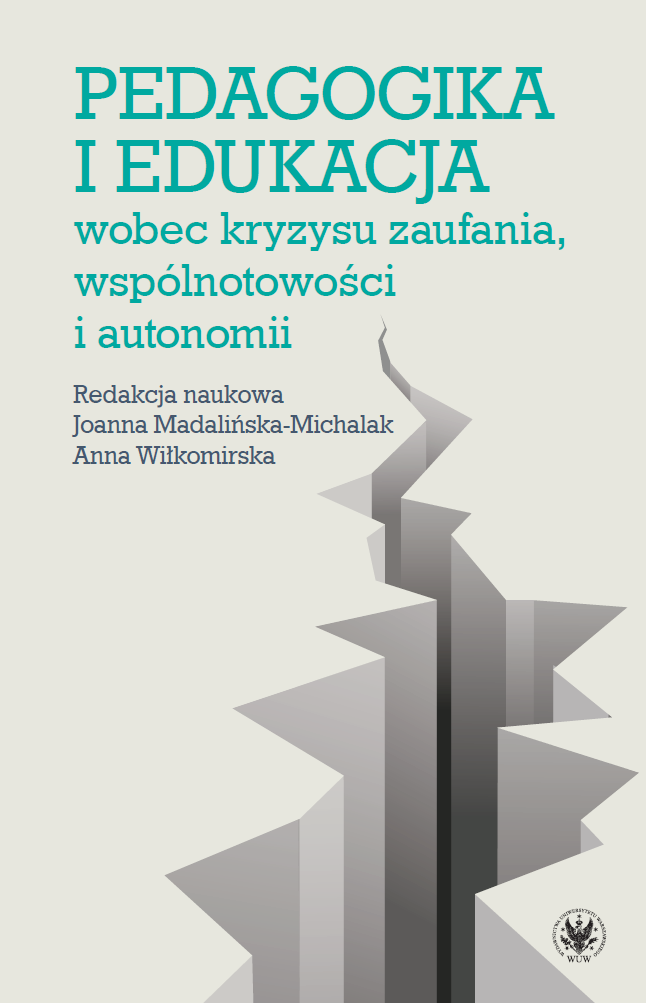Twórcze działania w pracy z dziećmi z cechami osobowości narcystycznej izolowanymi rówieśniczo jako sprawcami i ofiarami przemocy rówieśniczej
Creative activities in working with peer isolated narcissist children as victims and perpetrators of peer violence
Author(s): Anna Gaweł-Mirocha
Subject(s): Education
Published by: Wydawnictwa Uniwersytetu Warszawskiego
Keywords: art therapy; peer violence; peer rejection
Summary/Abstract: The aim of the article is to discuss the phenomenon of peer rejection as a form of peer violence with particular emphasis on the process of art therapy as a form of support for rejected children. In the article, I tried to show the way in which plastic art therapy can help children who are rejected by their peers. Thanks to belonging to a group, the child satisfies important needs: affiliation, recognition, prestige and achievements. A special form of group interaction is peer rejection, which is treated as one of the main manifestations of social maladjustment. The etiology of rejection is multifactorial and includes personality traits that are negatively evaluated by peers. The peer group in school age becomes one of the pillars of building the child’s identity and personality. A child who experiences rejection by peers – loses playing companions, is a victim of bullying – develops negative beliefs about himself. Rejected by a group, without friends, they may say that they are not worth the friendship. Negative emotions grow in the child – feelings of helplessness, loneliness, sadness, anger. A child not being able to deal with a difficult situation, unloads his/her anger and sense of helplessness by resorting to aggressive behavior. In the classroom, it can be considered a provocative perpetrator of bullying. The child then falls into the vicious circle of the victim-perpetrator, negatively affecting the peer group. This phenomenon has a negative impact on the child’s further development and its functioning in the peer group. That is why therapeutic measures are very important to minimize the phenomenon of peer rejection. Art therapy can be an alternative form of working with peer-rejected children. It is a form of psychotherapeutic influence that can effectively supports work with children who experience difficulties in peer relationships.
Book: Pedagogika i edukacja wobec kryzysu zaufania, wspólnotowości i autonomii
- Page Range: 380-396
- Page Count: 17
- Publication Year: 2020
- Language: Polish
- Content File-PDF

